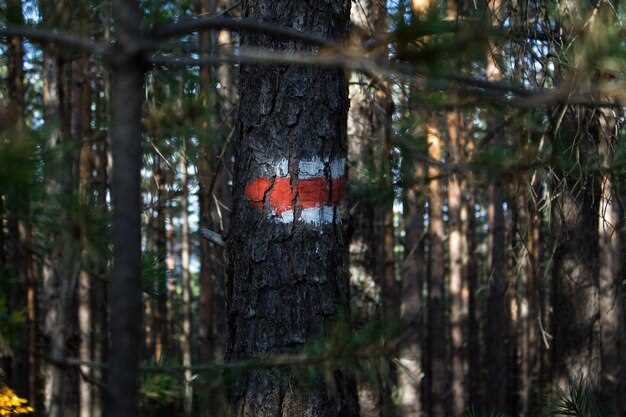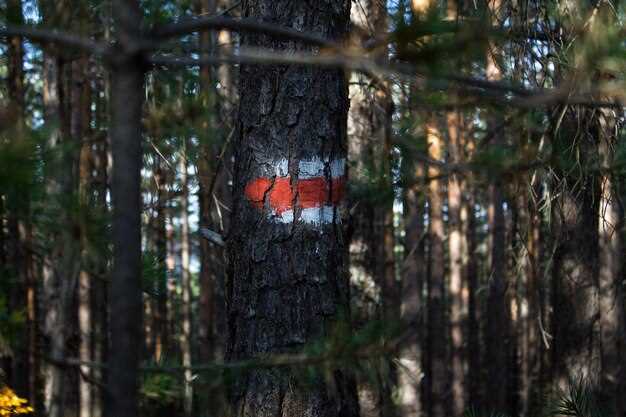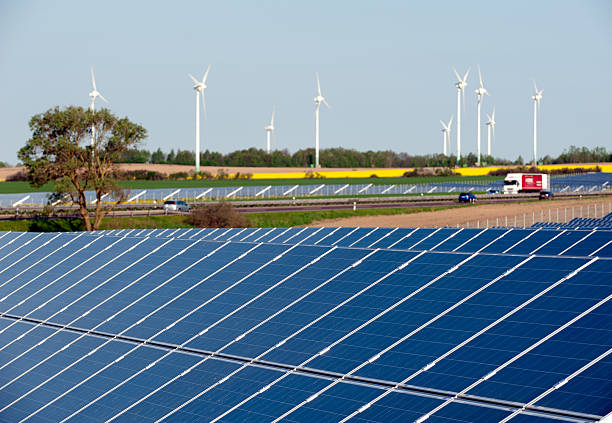Ensure eco retreats in wildland areas are well-prepared by adopting fire-resistant building materials. Common materials like treated wood, steel, and fire-retardant insulation can significantly reduce the risk of fire damage. Consult local construction guidelines to verify their compliance with current safety regulations. Additionally, maintaining a defensible space around structures by clearing flammable vegetation can further decrease fire hazards.
Installation of a reliable water supply system is vital. Whether it’s a dedicated reservoir, nearby natural water source, or integrated sprinkler system, having a readily accessible water supply in an emergency can save lives and property. When planning water resources, consider the potential need for additional storage during peak fire season.
Develop staff training programs focusing on emergency response and evacuation procedures. Regular drills improve preparedness and ensure swift, coordinated actions during real emergencies. It’s also beneficial to collaborate with local fire authorities for specialized training, allowing for a comprehensive understanding of regional fire dynamics.
Understanding Wildland Fire Codes

Adopt building materials with high fire resistance ratings to protect eco retreats from wildfires. Using non-combustible materials like metal or cement for roofs and walls significantly enhances safety. Ensure proper ventilation systems to prevent ember penetration, a common cause of structure fires during wildland incidents.
Create defensible space by maintaining a minimum of 30 feet of cleared land around buildings. Trim trees, remove dead vegetation, and keep grass short to reduce fuel sources near structures. Incorporate fire-resistant landscaping to further mitigate risks. Employing species like lavender or rockrose can provide natural barriers while maintaining aesthetic appeal.
Install and maintain adequate water supply systems with pumps and hoses accessible during emergencies. Set up clear signages for fire routes and ensure they are visible at night. Regularly train staff in wildfire response procedures to improve preparedness, emphasizing the importance of evacuation routes and communication systems. Collaboration with local fire departments is crucial in refining these strategies.
Use technology such as fire alarms and remote sensing devices to enhance monitoring and early detection capabilities. Regularly inspect and maintain equipment to ensure functionality, especially during peak wildfire season. These proactive measures significantly improve overall safety and community resilience.
Key Regulations for Eco Retreats
Adopt fire-resistant building materials. This plays a pivotal role in minimizing risks in wildland areas. For instance, non-combustible materials like concrete, steel, or specially treated wood can significantly reduce the spread of fire. Additionally, implement defensible space regulations by maintaining a clear area of at least 30 feet around all structures, removing any flammable vegetation or debris.
Install a robust firefighting water supply. Establish a reliable source, such as a man-made pond or an underground water storage tank, with easy access for emergency services. Equip your retreat with both interior and exterior sprinkler systems; these can be crucial in the initial moments of a fire. Also, regularly test all fire suppression equipment to ensure readiness.
Develop comprehensive evacuation plans. Clearly mark multiple escape routes, maintaining them free of obstructions at all times. Conduct annual fire drills to ensure staff are prepared for emergencies. Ensure all guests receive a briefing upon arrival about emergency procedures and exits.
Educate and train your staff on fire safety protocols. Regular training sessions should cover the use of fire extinguishers, alarm systems, and emergency communication strategies. Encourage a proactive approach to fire prevention by appointing a dedicated fire safety officer responsible for implementing and overseeing safety measures.
Collaborate with local fire departments to conduct periodic assessments of your property’s fire readiness. These evaluations can identify potential vulnerabilities and provide insight into improving existing measures. Staying updated with local fire safety codes is essential to adapting to any regulatory changes promptly.
Incorporate native and fire-resistant landscaping around the property. Choose plants that are less likely to ignite, and keep them well-maintained by regularly pruning dead branches and disposing of dry leaves.
How to Implement Fire Safety Measures
Ensure all buildings within the eco retreat are equipped with smoke alarms and regularly test them to guarantee functionality. Place alarms strategically in bedrooms, common areas, and hallways for maximum coverage.
Establish firebreaks by clearing vegetation at least 30 feet around structures to act as a barrier against wildfires. This measure helps prevent the rapid spread of fire to buildings.
Install a reliable water supply system with hoses and sprinklers specifically designed for fire suppression. Ensure the supply is adequate for prolonged use and perform regular maintenance checks.
Employ fire-resistant materials in the construction and renovation of buildings. Use metal, clay, or slate for roofing, and choose fire-retardant coatings for exterior walls to enhance fire resistance.
Create an emergency evacuation plan and conduct regular fire drills. Clearly mark escape routes and ensure all guests and staff are familiar with the procedures.
Train staff members in basic firefighting techniques and provide equipment like fire extinguishers and fire blankets. Conduct regular refresher training sessions to maintain preparedness.
Develop a vegetation management plan, focusing on reducing fuel load by removing dead trees and limb debris. Regularly assess the area to ensure compliance with local fire safety regulations.
Coordinate with local fire authorities to stay updated on fire weather conditions and high-risk periods. Establish a communication protocol for timely alerts and guidance.
| Measure | Frequency |
|---|---|
| Test Smoke Alarms | Monthly |
| Conduct Fire Drills | Quarterly |
| Maintain Water Supply Systems | Bi-annually |
| Staff Fire Safety Training | Annually |
| Assess Vegetation Management | Seasonally |
Challenges in Adhering to Fire Codes
Ensure property maintenance meets wildfire safety standards by regularly clearing vegetation. Removing flammable materials like dry leaves and underbrush near structures minimizes fire risks. Proper planning must integrate fire-resistant materials in construction. Select materials like metal or tile for roofs and concrete for walls, as these significantly reduce vulnerability.
Another key area is the implementation of effective emergency access routes. Eco retreats often face obstacles because of their remote locations. Consult local fire authorities to design roads that are wide and stable enough for emergency vehicles. In some cases, retrofitting existing paths might be necessary, which requires coordinated efforts with municipal engineers.
Advance training for staff in fire response drills is non-negotiable. Conduct these trainings at regular intervals to keep the team prepared for actual events. Incorporate real-life scenarios that the team may face during fire emergencies to enhance preparedness.
The complexity of local regulations can also present a significant hurdle. Engage with local fire departments and legal experts to fully understand and incorporate the required fire safety measures. This collaboration can prevent oversight and guide the smooth operation of the retreat.
Balancing ecological preservation with fire code compliance could challenge many operators. Adopt innovative designs that meet safety without compromising the natural surroundings. Consulting with designers who specialize in eco-friendly practices can help in striking this balance efficiently.
Lastly, financial constraints may limit compliance efforts. Seek grant opportunities or government subsidies aimed at promoting safety in wildland areas. Such financial assistance can alleviate costs associated with upgrading facilities to meet fire code standards.
Case Studies of Effective Code Compliance
Implementing fire safety codes in eco retreats within wildland areas is paramount to ensuring both guest safety and environmental sustainability. Here are several successful case studies that highlight best practices in code compliance.
- Green Trail Retreat, Colorado
- The retreat installed state-of-the-art sprinkler systems throughout cabins and common areas, reducing fire risks significantly. By using water-efficient technology, they balanced safety with conservation efforts.
- Regular fire drills and staff training sessions are conducted quarterly. This ongoing education fosters a culture of preparedness among the staff and guests.
- Woodland Haven, California
- Woodland Haven adopted a defensible space program. By clearing a perimeter around structures, they effectively minimized fire spread potential from surrounding vegetation.
- The retreat replaces traditional fire pits with gas-fueled alternatives, eliminating open flames and reducing ignition sources.
- Forest Nest, Oregon
- A dedicated fire safety officer oversees compliance, implementing frequent inspections to ensure adherence to local and state regulations.
- Forest Nest pioneers in the integration of fire-resistant building materials. Structures are constructed with flame-retardant timber and metal, offering durability and safety.
These case studies illustrate that prioritizing fundamental fire safety measures and continuous improvement can lead to success in code compliance for eco retreats in wildland settings.
Ensuring Retreat Fire Safety

Install an advanced early warning system. Implement smoke detectors and heat sensors throughout the retreat, connecting them to a centralized alert system for rapid response.
- Maintain a defensible space by clearing vegetation at least 30 feet from all structures. Regularly trim trees and remove dead plants to minimize fuel for potential fires.
- Use fire-resistant building materials. Choose materials like metal, brick, or concrete for roofing and exteriors, reducing the risk of ignition.
- Develop and practice a comprehensive evacuation plan. Conduct regular drills for staff and guests, ensuring everyone understands exit routes and gathering points.
- Provide accessible firefighting equipment. Place fire extinguishers, hoses, and water sources strategically around the retreat, ensuring they are easy to access in an emergency.
- Implement a strict no-fire zone policy in high-risk areas. Clearly mark these zones and educate guests on fire safety rules upon arrival.
- Arrange regular training for the staff on fire suppression techniques and emergency procedures. Empower your team to act swiftly and effectively if a fire threat arises.
- Monitor weather conditions and adjust retreat operations during high-risk periods. Close certain areas and restrict activities as needed to enhance safety.
Ensure adequate insurance coverage specifically for wildland fire risks. Review policies annually, adapting to changes in fire patterns and retreat expansion.
Design Considerations for Fire Resistance
Choose building materials with a high fire-resistance rating. Utilize materials such as concrete, steel, and stucco that withstand high temperatures and resist ignition longer. Use non-combustible roofing materials like metal or clay tiles to minimize the risk of embers igniting the roof. Seal roof edges and use fire-resistant soffits and fascia to prevent ember entry.
Design the structure with defensible space in mind. Clear vegetation around the retreat, maintaining at least a 30-foot perimeter of low-flammable landscaping. Integrate hardscaping features such as stone paths and walls to act as firebreaks, effectively slowing down flames.
Incorporate dual-pane, tempered glass windows and metal screens to reduce the chance of breakage or heat penetration. Opt for fire-resistant doors made of metal or solid wood. Seal gaps around windows and doors to prevent ember intrusion.
Position structures with wind direction and slope topography in mind. Hillside buildings face greater wildfire threats, so design with additional fire barriers like earth berms or retaining walls, which help divert fire movement. On flat terrain, orient structures to minimize wind exposure.
Install sprinkler systems both inside and outside the building for active fire suppression. Coupled with smoke detectors, they provide an added layer of protection. Ensure reliable access to water sources like tanks or natural bodies of water for emergency use.
Training Staff for Fire Emergencies
Ensure all staff members participate in structured fire emergency drills at least twice a year to familiarize themselves with evacuation routes and emergency responsibilities. Regular exercises build confidence and ensure a rapid, coordinated response when an actual emergency arises. Use these drills to test the operational effectiveness of fire alarms and communication systems, making necessary adjustments based on observed weaknesses.
Incorporate a standardized protocol for all team members to follow during a fire. Define clear roles and assign specific tasks, such as managing guest evacuation, operating fire extinguishing equipment, and liaising with emergency responder services. Provide hands-on training with fire extinguishers and other firefighting equipment, emphasizing the importance of addressing small fires before they escalate.
Conduct periodic knowledge checks through quizzes and role-play scenarios to reinforce learning and ensure staff retain critical information. Supplement these with accessible, clearly written manuals detailing emergency procedures. Host interactive workshops, involving local fire departments for expert insights and practical tips, enhancing both learning and community relations.
Install up-to-date fire safety apps on staff mobile devices to provide instant access to emergency contacts and procedures. Ensure these tools are user-friendly, allowing employees to quickly retrieve information even during stressful situations. Encourage feedback to continuously refine and improve safety protocols, adapting to new challenges and evolving risks in wildland areas.
Integration of Fire-Safe Landscaping
Choose native plants with high moisture content and low resin for your landscaping. For instance, select succulents or deciduous trees over resinous conifers. These plants retain more water, making them less flammable.
Maintain spacing between trees and shrubs. Ensure at least a 10-foot separation between tree canopies to prevent fire from easily spreading. Trim limbs that are lower than 6 feet from the ground to minimize ladder fuels, which help ground fires climb into the canopy.
Implement a 5-foot non-combustible zone around all structures. Use materials like gravel or stone instead of flammable ground covers or mulch. This creates a barrier that stops flames from reaching your buildings.
Incorporate fire-resistant hardscape features like patios and stone walls, which can act as fire breaks, further protecting the structures. These elements not only add aesthetic value but also aid in your fire safety strategy.
Regularly clean roofs, gutters, and decks to remove dried leaves, pine needles, or any organic debris. These materials are highly flammable and pose a significant risk if not cleared often, especially during the dry season.
Consider installing an irrigation system tailored to local regulations, ensuring plants remain hydrated during peak fire seasons. An automated system can be programmed to provide efficient water use while maintaining plant moisture levels vital to preventing fires.
Use of Technology in Fire Detection and Response
Implementing smart sensor networks enhances early fire detection capabilities in eco retreats. Deploy these sensors to monitor temperature, smoke, and humidity levels continuously, providing real-time data that helps identify potential outbreaks swiftly. Integrate this data with AI-driven analytics platforms to predict fire risks based on environmental conditions.
Equip drones with thermal imaging cameras for rapid assessment of large wildland areas. These drones can quickly locate active fires and assess their spread patterns, delivering crucial information to firefighting teams on the ground. Combine drone data with real-time weather analysis to guide evacuation plans efficiently and ensure safety.
Enhance communication by utilizing satellite-based systems that remain operational even when traditional networks fail. These systems provide reliable channels for dispatching emergency alerts and coordinating response efforts between eco retreat staff and fire response teams. Implement automated alerts to notify guests and staff of immediate dangers, guiding them to safety with pre-determined evacuation routes.
Adopt fire suppression technologies like remote-controlled water sprinklers and fire retardant dispensers along the perimeter of eco retreats. These systems can activate automatically based on data from sensor networks, helping to control fires in their early stages and protect both human lives and property.
Training staff in the use of these technologies is key to maximizing their benefits. Conduct regular simulations and drills to ensure preparedness and to fine-tune response strategies. Leverage virtual reality tools to provide immersive training experiences that simulate real-life fire scenarios, offering staff valuable hands-on experience without real-world risks.
Q&A:
What are the key components that eco retreats in wildland areas must include in their fire safety plans?
Eco retreats in wildland areas need to address several critical components when designing their fire safety plans. These components typically include creating and maintaining defensible space around structures, using fire-resistant building materials, implementing early detection and alarm systems, ensuring accessibility for emergency vehicles, and establishing clear evacuation routes. Additionally, staff training and regular fire drills are essential to ensure everyone knows how to respond swiftly and safely in the event of a fire.
How do local regulations influence fire safety measures for eco retreats situated in wildland regions?
Local regulations significantly shape the fire safety measures that eco retreats must implement. These regulations often dictate the construction materials permissible for use, the required clearance around buildings, and the installation of fire prevention systems like sprinklers. Authorities might also specify maintenance practices such as regular clearing of vegetation to minimize fire risk. Compliance with these regulations is essential not only for the safety of guests and staff but also for the preservation of the natural surroundings.
Can you provide examples of how eco-friendly practices can be integrated with fire safety protocols at eco retreats?
Eco-friendly practices can harmoniously coexist with fire safety protocols in several ways. For example, retreats can utilize non-toxic, fire-retardant materials that have minimal environmental impact. Rainwater harvesting systems can double as sources for fire suppression. Additionally, using solar-powered lighting and alarms reduces reliance on electrical systems that can pose fire risks. Planting native, fire-resistant vegetation can both support local ecosystems and contribute to defensible space strategies.
What are the most common challenges faced by eco retreats in implementing fire safety codes?
The most common challenges include balancing environmental preservation with the need for safety infrastructure, adapting fire safety measures to unique site conditions, and ensuring compliance with both local and broader jurisdictional codes. Additionally, the financial implications can be significant, as implementing robust fire safety measures can be costly. Eco retreats often need to invest in staff training and equipment, which requires ongoing financial commitment.
Why is community collaboration important in enhancing fire safety for eco retreats in wildland areas?
Community collaboration enhances fire safety by pooling resources, knowledge, and support. Neighboring properties can work together to maintain vegetation control efforts and create wider defensible space. Community involvement ensures consistent preparedness and swift response during emergencies. Sharing best practices and strategies across the community tremendously benefits everyone, fostering a safer and more resilient environment. Local fire departments and authorities can provide valuable training and insights, making community collaboration pivotal for effective fire safety management.




